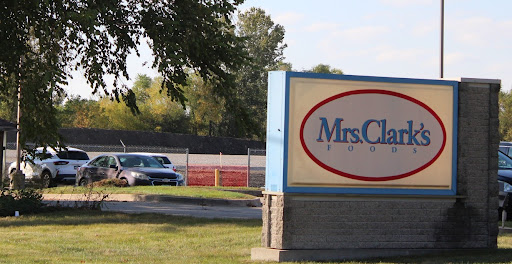Issues surrounding affordable housing discussed by panel

Kathy A. Bolten Apr 21, 2023 | 10:26 am
4 min read time
971 wordsAll Latest News, Housing, Real Estate and Development
Polk County Housing Trust Fund this week held a symposium on affordable housing, moderated by Executive Director Eric Burmeister. Panelists were Charlie Cowell, an urban planner at RDG Planning & Design; Renee Hardman, a member of the West Des Moines City Council; Luke Mohlenhoff, vice president/construction banking at West Bank; Anne Russett, senior planner at the city of Iowa City; and Kris Saddoris, vice president of development at Hubbell Realty Co.
The following are excerpts of the panel discussion:
Can you give us an idea of what is going on in Iowa City regarding the inclusion of missing middle housing?
Russett explained how the Johnson County community used form-based zoning to determine how land in the city’s South District could be used and developed. The zoning plan outlines what structures can be built, and where and how the structures will be used. Traditional zoning dictates the number of dwelling units allowed per acre, the maximum heights of a building and how much parking space is required. The new zoning plan, which is being duplicated in another area of Iowa City, allows a mix of housing types in neighborhoods. Small multifamily buildings can be located on corner lots next to main thoroughfares. Townhouses and duplexes can be included in single-family neighborhoods.
“We want to make sure that as our city grows, we have a highly interconnected street network that no matter where you live, you can walk to a neighborhood center, whether it’s a Main Street, a small commercial area or … a park,” Russett said. “Lastly, we wanted to ensure a diversity of housing types. One of the things that the code does, is not only allow a variety of housing types, but it requires a mix at the block level. At the block level, you can’t just do all single-family [houses]. There needs to be at least one other type of housing.”
Kris [Saddoris] led the charge on … accessory dwelling units in Des Moines and as soon as the city passed its code, jumped right in. How important was it for Home Inc. [the nonprofit of which Saddoris is board president] to step up and talk about ADUs in a very public way?
Saddoris told the audience that she first learned about accessory dwelling units – secondary housing on a single-family lot – during a meeting in Louisville, Ky. “Every city now is looking for different ways to do affordable/attainable housing,” Saddoris said. “The unique nature of ADUs is that it is affordable but it also … makes the homeowner have affordability because many times they use that rental income to stay in their place. The joy of the ADU is that it actually changes the way it works in the neighborhood throughout its life.”
Home Inc., in a partnership with Polk County Housing Trust Fund, built an accessory dwelling unit in the Oak Park neighborhood on Des Moines’ north side. Information about the project is available here.
When it comes to zoning strategies [like form-based zoning], what are some of the ways planning professionals can help cities understand the benefit?
Cowell said city officials need to understand what is in their community’s zoning code. “A lot of communities we work in don’t realize what’s in the code,” he said. “They don’t realize that there’s barriers that the development community sees because they aren’t having conversations … about those barriers.”
Talk about what it takes as an elected official to work through [issues] with neighbors when you want to make changes in an existing neighborhood.
Hardman described the months-long process it took to make changes in West Des Moines’ Historic Valley Junction that allowed workforce and other types of housing in the area. To help move the conversation forward, a Citizens’ Engagement Committee was formed, Hardman said.
“It was a long process,” she said. “It was probably nine to 11 months of having developers at the table, residents at the table, business owners at the table – all trying to come up with design guidelines and all of the things needed to preserve the look and feel of the area but also move the needle on the growth that was needed. There were a lot of painful conversations.”
When the process concluded, guidelines were created that “preserve the integrity of that area, but also allow for growth and development that is really needed,” Hardman said. “I probably have a few scars to show for it but that’s what we do as elected officials – we get in the thick of it all … with a goal of hopefully coming up with a solution that is good for the city.”
As a lender to home builders, what are you seeing in terms of your customers saying they need more money because of cost escalations?
Home building is “a very, very risky capital-intensive business,” Mohlenhoff said. “If you’ve lived in Des Moines for a while, think of some of the builders you don’t see any more. Some very large builders.”
It takes several years of planning before houses start being built in a new plat, Mohlenhoff said. City, state and federal building and zoning codes and regulations often change between the time land is purchased and a home builder starts constructing houses.
“You may have to completely change course if that happens,” he said. “And if the economy changes at the wrong time, it’s more than just heartburn. [Most of the loans builders and developers have] are interest only and they are variable rates. In the last few months, when interest rates have increased, their costs have probably doubled to carry all of the land for future development. … It’s extremely difficult.”

Kathy A. Bolten
Kathy A. Bolten is a senior staff writer at Business Record. She covers real estate and development, workforce development, education, banking and finance, and housing.









